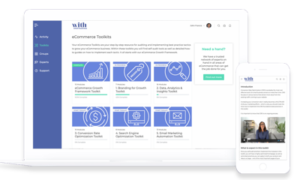When thinking about optimizing your website for search engines the 3 top factors to consider are:
1. Unique page titles
The ‘Page Title’ or ‘Title Tag’ is the clickable title of a search page that appears with the result on the SERP (Search Engine Results Page). To set a page title, generally, you can use the <title> tag in the HTML around your text but most content management systems like WordPress have forms to automatically set <title> tags around the page titles on your website when creating new pages.
Unique page titles offer one of the most effective means to classify a page, and are strongly weighted ranking factors.
Titles are critical to giving users a quick insight into the content of a search engine result and why it’s relevant to their query. It’s often the primary piece of information used to decide which result to click on. For this reason, page titles should be as accurate as possible and relevant to the page’s content.
2. Meta Descriptions
A meta description is an HTML tag used to describe the content of a web page. This description will show up below the title and URL of your page as it appears in the search engine results. Your meta description’s objective is to provide a summary for people searching on Google (or other search engines) of what your page’s content covers and to get them to click your link. In other words, meta descriptions are there to generate click-throughs from search engines.
Meta descriptions are seen on the SERPs (Search Engine Results Pages) and when well-worded, they assist in increasing your CTR (click through rate).
Search engines like Google say they don’t use meta descriptions in their ranking algorithm. But there is a huge indirect benefit, Google uses click-through-rate (CTR) as a way of working out whether you’re a good result. So, If more people click on your page when searching for something, Google considers your website to be a good result and will move you up the ranks.
- Always keep in mind that the best way to make your meta descriptions SEO-friendly is to write them with the intention of getting more clicks. Think of it as a micro-pitch for your website. Use active language and write a description that conveys your website’s unique selling proposition (USP).
- Use this simple 3 point hack: Add a clear call to action, address an emotional pain point, or offer a specific benefit to visitors.
- Write a unique meta description for each page, no duplicates!
- Keep them about 1-2 sentences (140-160 characters) long
- Include keywords from your keyword research.
3. Heading Tags
Heading tags are HTML tags used to identify headings and subheadings within your content from other types of text, such as, paragraph text.
HTML has six different heading tags — H1,H2, and so on. The H1 is considered the most important tag, and the H6 is the least important. The tags are often formatted from large (or most important) to smallest (or least important).
H1 has always been a major SEO ranking factor, plus, H1s are usually the most visually notable content on the page. While H2-H6 tags are considered not as important to search engines, proper usage of H1 tags has been emphasized in many studies. As well as clumsy usage of H1s may keep a site from major rankings and traffic improvements – so not a good place to get creative with your copywriting, stick to clear language directed by your keyword research.
Headings hierarchy are especially important when it comes to articles and blog posts. It is also important that you optimize your headings on all other pages to ensure they are SEO friendly. Correctly coded headings help break up your content and theme significant areas of content. They also assist search engine algorithms determine relevance.
Here are some best practices on how to write and implement heading tags:
1. Use H1 tags to structure your website: each heading should give the reader an idea of what they can find on the page.
Here is a great tip from the Search Engine Journal: a helpful way to think of header tags is by comparing them to a table of contents for a non-fiction book:
Your H1 introduces the topic your page is all about, just as a title tells a reader what a book is all about.
The H2s are akin to book chapters, describing the main topics you’ll cover in sections of the article.
Subsequent headers, H3-H6s, serve as additional subheadings within each section, just as a book chapter may be split up by multiple sub-topics.
We don’t recommend you getting caught up trying to format your content to match H3 to H6. If you are a beginner, keep it simple.
2. Use headers to break up text. As previously mentioned in the CRO toolkit, you need to create a flow for your readers and help them find relevant information. People simply like scannable content. According to research, an article that’s scannable is 58 percent more likely to perform better with readers.
3. Include your keywords in your headings. Pull up your keyword research and try to use as many single keywords with high search volume as you can.
4. Only use one H1 per page. H1s are big, and they look like titles to readers. Use multiple H1s on your page, and it starts to look a little out of control.
5. Your H1 tag is not the same as your title tag. In terms of content, they can be similar, but make sure you display H1 headings when appropriate. Read more about the difference here.
Want to make sure you are not utilizing H1 tags already or that you don’t have any multiple H1s lingering on your site? Run your domain through SEOptimer.


